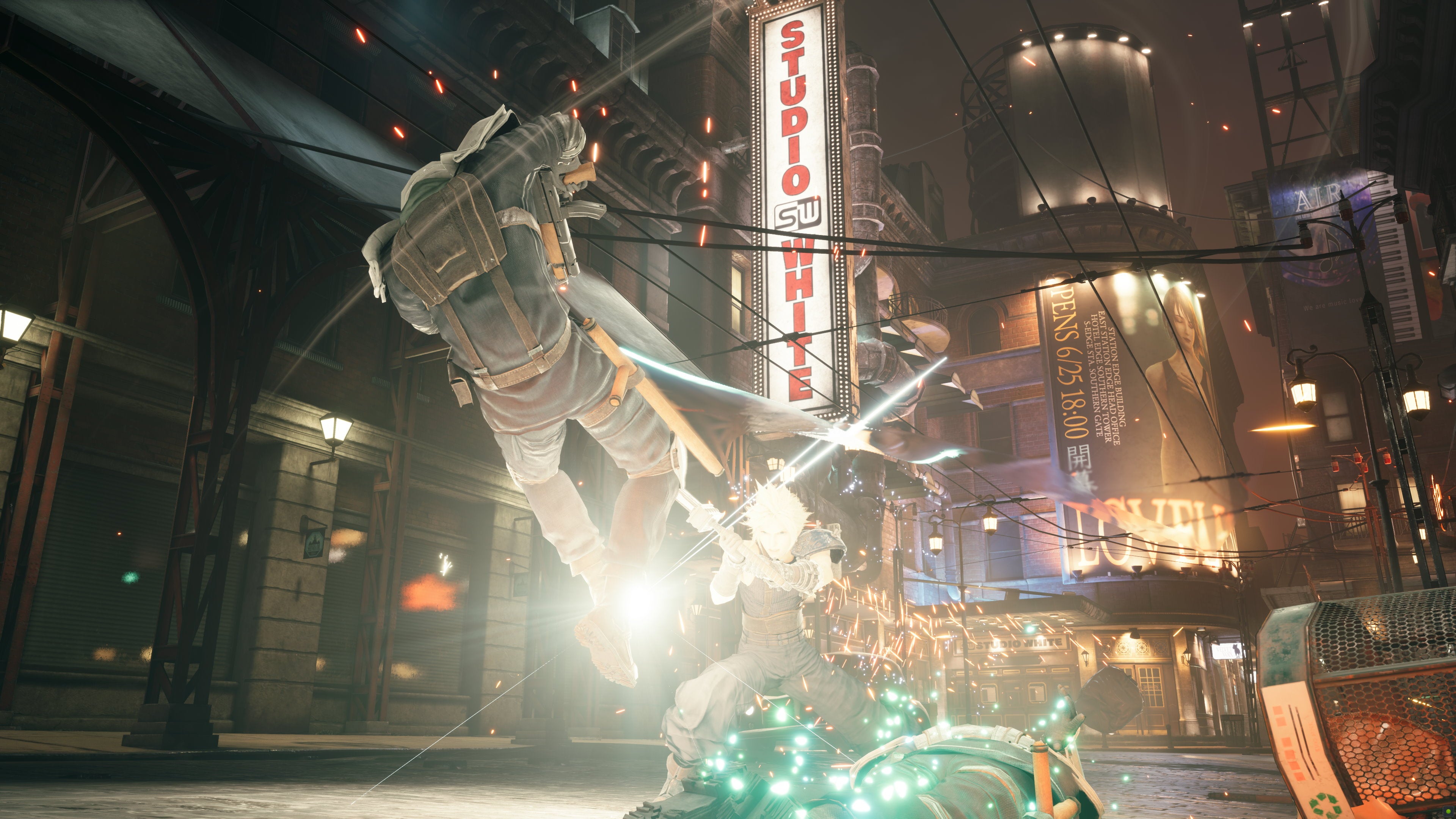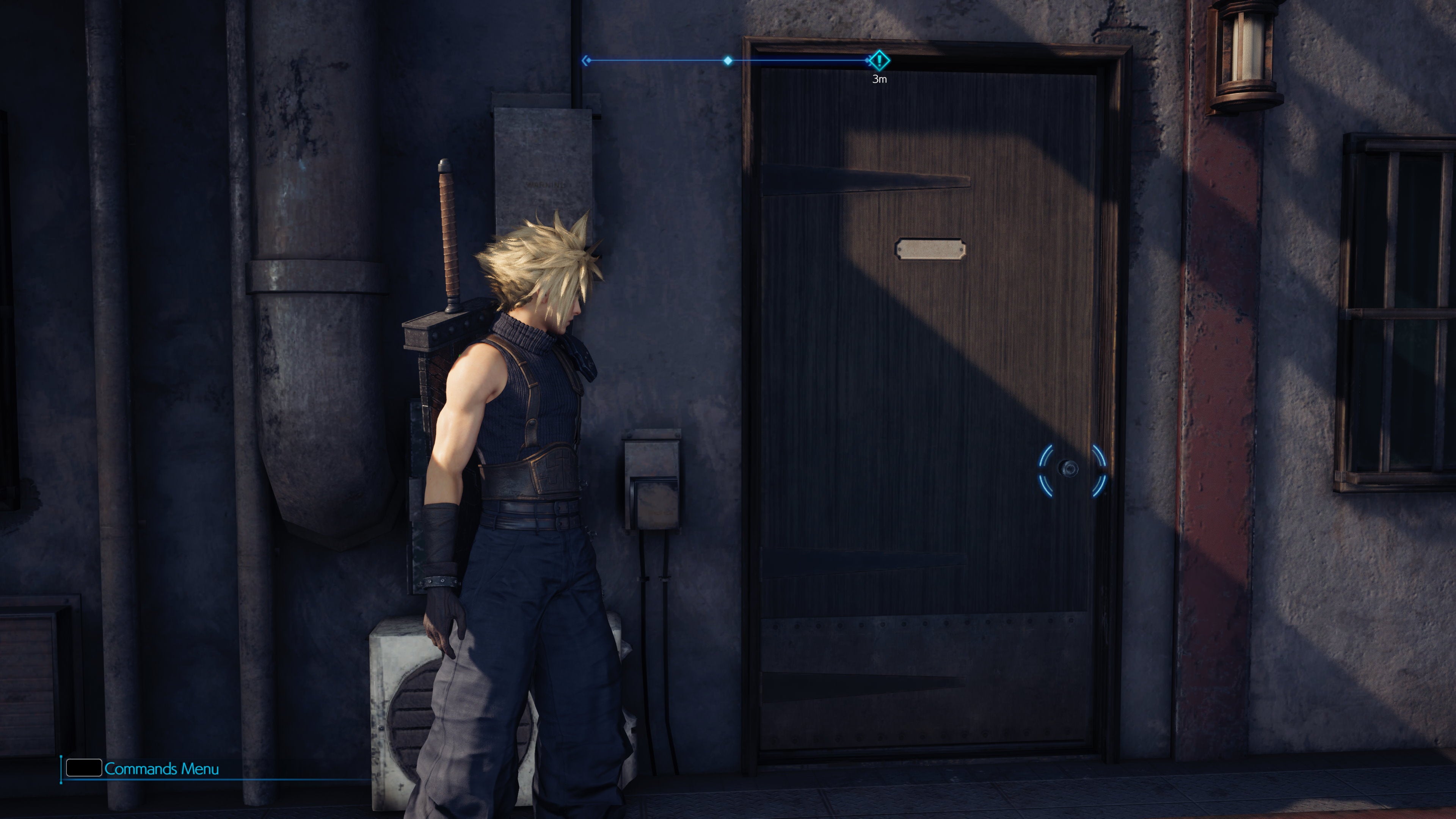From the first swell of Nobuo Uematsu’s freshly orchestrated score (sumptuously rearranged for Remake by Masashi Hamauzu and Mitsuto Suzuki), to the sweeping camera angles, exquisitely animated cutscenes, and the absurdly detailed pores and chin fluff of its central cast, this is a game that’s designed to get hearts racing, fists pumping, and crank every last pair of glasses to full rose-tint. Those first few hours pass by in a flash, the rush of nostalgic exhilaration carrying you swiftly from one disaster to the next. There are moments when it does, and must, take its foot off the gas. As you probably know by now, FF7R (or Final Fantasy VII Remake Intergrade for this PC release, which also bundles in the Yuffie-focused Intergrade expansion) chronicles just one part of Final Fantasy VII’s overarching story - the party’s escape from the city of Midgar. It turns what would take you four hours in the original game into a 40+ hour epic. To say this game has padding is an understatement. Heck, two of its eighteen chapters could be excised entirely, as they’re comprised of nothing but busy-making sidequest filler. And yet. Despite being someone who has no real attachment to the 1997 original (everyone knows VIII is the best, come on), there’s something about FF7R’s desperate and almost painfully obvious attempts to recapture some of the series’ former glory that had me hooting and hollering with the rest of them by the time I finally saw the credits roll. I even grew to respect the ditzy wet blanket that is Aerith Gainsborough, Cloud’s sort-of-but-not-really-proper-love-interest who I’d previously despised with all the white-hot power of the game’s iconic world-ending meteor. That takes some doing, and it is, ultimately, down to that extra padding. By giving its characters more time to breathe, Final Fantasy VII Remake really does turn those once ham-fisted polygon puppets into a fully-realised cast of nuanced warriors - and I still maintain that climbing the 59 flights of stairs in the Shinra building is one of the greatest character moments you’ll ever see in any game you’ll play this year. In truth, you could probably still chop the game in half and achieve the same result, but to do so would deprive you of FF7R’s greatest coup: the reinvention of its active time battle system. Some might say it’s heresy to remake Final Fantasy VII without turn-based combat, but to them I say “You’re a fool.” FF7R’s blend of real-time action and slow-mo command prompts is easily one of the most dynamic and engaging battle systems the series has ever seen, besting Final Fantasy XV’s automated button mashing and occasionally co-ordinated party combo by a clean country mile. Like XV, enemies dwell in the world around you rather than being confined to separate battle arenas. Approach and they’ll rush headlong into battle, the tempo of the music seamlessly ramping up to match the heated exchange of blades and bullets. You begin by executing simple attacks in real-time by tapping X on your controller or F on keyboard (although let’s face it, this is a game that’s best played with a pad), which builds up your ATB bar. Initially this bar is divided into two segments for most party members (later upgrades can chop it up into three), and filling each one lets you perform a special skill from your command menu. Open this up by tapping A or space bar and the action grinds into glorious slow-motion, blurring the action to bring the menu to the fore while also giving you the time and headspace to select a spell or ability without feeling rushed. This includes dipping into your Item menu for potions and resurrecting phoenix downs, too, which can really ratchet up the tension when you’re both low on health and don’t have enough ATB juice for a quick pick-me-up. Happily, there’s a good chance one of your party members will be in better shape, and you can either issue them specific commands to help you out, or take control of them wholesale if you fancy switching things up. FF7R teaches you the virtue of bouncing between party members, as there are some enemies that Cloud and his over-sized sword just can’t reach. In these cases, Barret’s long-range arm cannon or Aerith’s magical spells make for much better options, and swapping between your different party members to exploit weaknesses, pressure and then eventually stagger enemies for mega hit points keeps even the smallest monster and Shinra grunt rumbles feeling fresh and invigorating. It’s a gorgeous system in every sense of the word, rewarding considered decision-making with the series’ flashiest attack animations to date. The latter may well be another nostalgia grab for returning fans, but it nevertheless builds and improves on XV’s pure action model in all the right ways. Noctis and his gaggle of guards never looked as cool or capable as Barret, Tifa, Cloud and Aerith (yes, even Aerith) do here, nor did they ever really sell the idea of a cohesive party working together. You were always just dogsbody Noctis, with the occasional quip from Ignis thrown into the mix, the odd greatsword slam from Gladio, and a reel of pictures from Prompto once it was all done and dusted. FF7R, on the other hand, recaptures the series’ heart-pounding party management while also looking hot as hell in the process. Dazzling doesn’t do it justice. That’s not to say FF7R’s veneer is completely flawless, however. While this PC release is a marked improvement on the original PS4 version, I wouldn’t say it looks materially different from the enhanced PS5 version. I’ll wait for the inevitable Digital Foundry comparison video for the full breakdown of its technical achievements, but even I was disappointed to find just two graphics options in FF7R’s settings menu (shadow and texture resolution), both of which only let me toggle between High or Low. Both, I’m pleased to report, do at least fix those godawful doors (as did the initial PS5 enhancement that arrived the same time as Intergrade did) but even 4K High settings on PC can’t save some of Midgar’s lesser details from falling into pixelated obscurity. As pleased as I am to finally see Remake on PC, this particular port also has me longing for a proper XV-style Windows Edition. We do, at least, benefit from superior frame rates compared to consoles, with 30fps, 60fps, 90fps and 120fps options available regardless of resolution, but that’s really the only tangible upgrade. There’s also the age-old argument of whether it’s even worth buying into it in the first place (especially at these exorbitant prices) given we still know next to nothing about what Square Enix are doing with Part II, or even whether they’ll ever finish it in a single human lifetime. I exaggerate, of course, but part of me does have doubts over whether we’ll see it conclude in the next decade. I also don’t even want to think about how much we’ll spend getting there either, especially when you can, in theory, see it all now via the original release on Steam for a tenner. And yet. Here’s where Nomura’s got me again, because, as you’ve also probably heard by now (or at least whisperings of it), FF7R is not a simple re-tread of what’s come before. If it was, I don’t think even its exquisite battle system would be enough to warrant such a massive investment in time, energy or expense. It would be very nice, sure. But boring. Safe. An indulgence. As the final hours of FF7R make abundantly clear, though, Nomura is taking this game in a bold and exciting new direction, and I am genuinely waiting on tenterhooks to see what kind of barmy bullshit he’s got in store for us. There is a very strong possibility it will all descend into the same kind of impenetrable nonsense as Nomura’s Kingdom Hearts series, but man alive, I do want to hope, you know? That Square Enix are brave enough to do something different with their golden Final Fantasy child, and not kowtow disgruntled fans. Considering this is a game that starts so obviously as one great tug on the nostalgic heartstrings, the fact that it finishes with such an audacious rug pull is something I can’t help but admire. Final Fantasy VII Remake Intergrade doesn’t just make a good first impression. It also makes a lasting impression, which is something that’s been missing from mainline Final Fantasies in recent years. The bits in between could be more succinct, sure. Chapters could be less drawn out; there could be less cramming yourself through endless tight spaces to disguise its loading screens; heck, you’ve fixed the goddamn doors Square Enix, why couldn’t you have fixed the nice little paper signs on Ma’s Soft Drinks shop, too, eh? Despite all that, and the fact it’s probably twice as long as it should be, Final Fantasy VII Remake Intergrade nearly always has enough highs to balance out the lows. Its action barrels along with a joyous spring in its step, and even the cinematics leave you gasping for breath at the absurd spectacle of it all. Final Fantasy XV may proclaim itself to be “the Final Fantasy for fans and first-timers,” but I’d argue Final Fantasy VII Remake Intergrade is a much more fitting recipient of the title.





